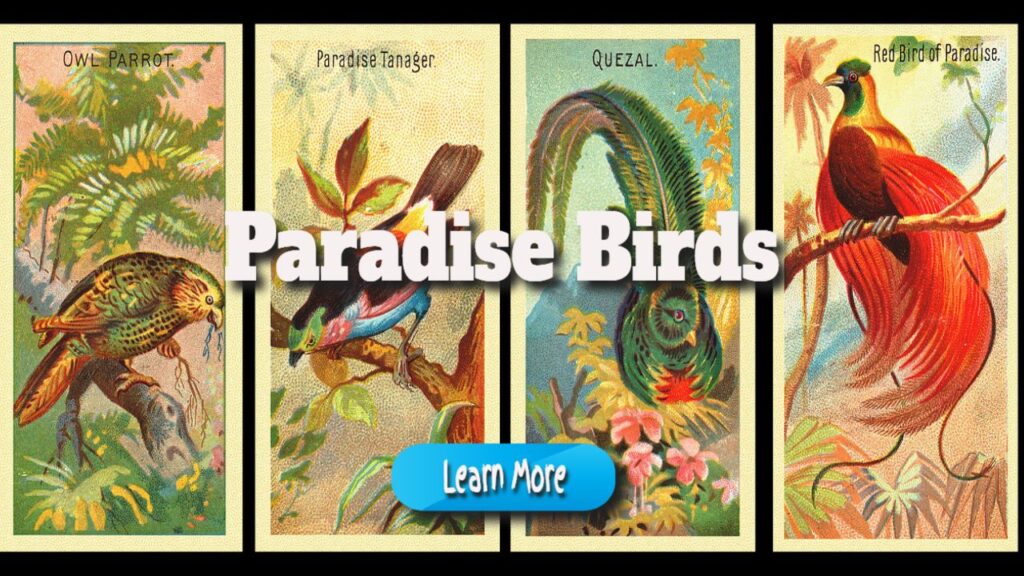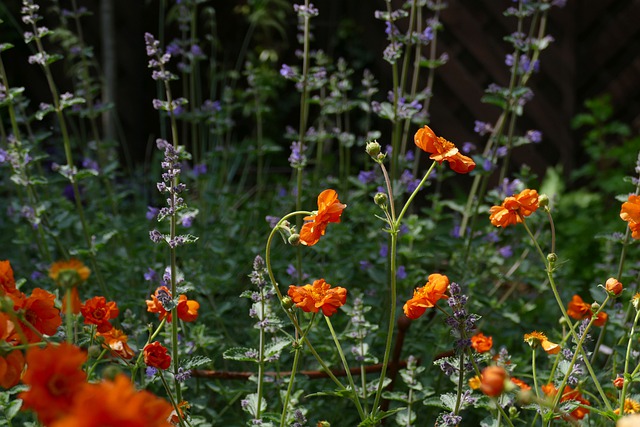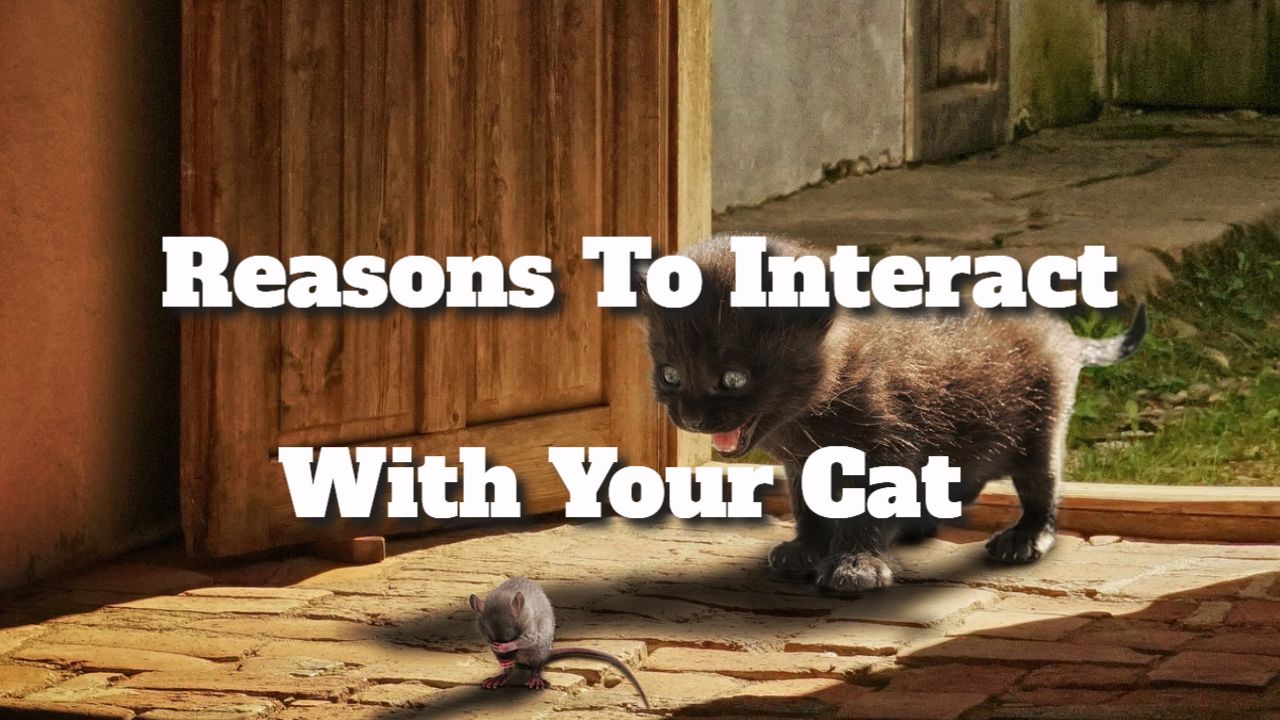Paradise Birds
Contents
Paradise Birds
Paradise Birds: Paradisaeidae, also known as birds of paradise, contains around three dozen species.
Colourful characteristics
Most species have spectacular colours and colourful plumage in yellows, blues, scarlets, and greens. These hues characterise them as some of the world’s most spectacular and appealing birds.
Males wear brilliant ruffs or greatly extended feathers, known as wires or streamers.
Some species have massive head feathers or distinguishing features like breast shields or head fans.

Mating customs
When males court females, they employ bright colours and distinctive accessories. Their complex dances, stances, and other rituals enhance their appearance and put on a spectacular show for the female birds and any close humans.
Such displays can run for hours and consume a significant portion of the males’ attention in many species.
Facts about the Bird of Paradise
Insects, fruits, seeds, and berries are the primary prey.
Male birds of paradise execute complex dances to attract a partner.
Males do an intricate dance while wearing brightly coloured feathers.
7.8 to 47.2 inch wingspan (20 to 120 cm)
Incubation time: 16 to 22 days
Canopies of tropical forests
Omnivorous Diet
Solitary way of life
Insects are the preferred food.
Bird species
There are approximately 50 different species!
Nesting location – tree forks
Molt’s age ranges from a few months to seven years.

Physical characteristics of the Paradise Birds – Color
Brown
Gray
Yellow
Red
Blue
Black
White
Green
Feathers are the skin kind.
Life expectancy is between 5 and 8 years.
Weight varies between 50g and 430g (1.8oz – 15.2oz)
15cm – 110cm in height (6in – 43in)
Range
Paradise birds can be found in New Guinea and the adjacent islands. Manucodes and Riflebirds are also indigenous to Australia.
Birds of Paradise are so appealing that they were previously a target for fur trappers, who destroyed several species.
These birds are also the inspiration for a vibrant flower. The banana family includes the South African bird of paradise (Strelitzia reginae). It has a lovely blossom that is believed to look like a soaring bird of paradise.
Amazing Facts About the Bird of Paradise
Males take their time maturing. Adulthood might take as long as seven years to reach.
As seed suppliers, these birds are vital to their habitat. They cannot break down the seeds found in the fruits they consume.
When specimens were first transported to Europe in the 1500s, some mistook the bird of paradise for the legendary phoenix.
They were known as “Birds of God” in their original tongue, from which the term “Bird of Paradise” was derived.
Where to Look for the Bird of Paradise
These birds are primarily found in Australia and New Guinea. Some species can also be found on surrounding islands. Riflebirds and manucodes are popular names for Australian species. They are found in deep forests and jungles.
In the wild, these birds are difficult to capture and identify. Visitors are also discouraged from visiting areas within their range.
Port Moresby Nature Park and Adventure Park PNG in Port Moresby, Papua New Guinea, on the other hand, are conveniently accessible zoos with beautiful collections of many species.
Each park has a walk-through aviary where you can get up close and personal with the animals as they munch on fruit and fly through their rainforest habitat.
Nesting birds of paradise
Females construct nests of ferns, leaves, and lianas, which are frequently put in a tree’s fork. Males are ineffective.



Birds of paradise truly embody the wonder of nature with their dazzling colors and captivating courtship displays. It’s fascinating to think about the lengths these males go to in order to attract a mate, dedicating hours to intricate dances and vibrant displays. Their beauty isn’t just a gift for human observers; it’s essential for the continuation of their species. In a world where many animals face threats to their habitats, it’s critical to appreciate and protect these extraordinary birds and the environments they rely on. It’s a poignant reminder of how interconnected we all are, and how preserving one piece of nature can help maintain the delicate balance of life.
You’ve captured the essence of birds of paradise beautifully. Their courtship rituals are not just stunning performances; they reflect the complexity of evolution and the drive to survive. It’s interesting to consider how their vibrant displays evolved not just for aesthetic appeal but as a crucial mechanism for species propagation.
You bring up an essential point about the role of courtship rituals in the life of birds of paradise. It’s fascinating how these elaborate displays function beyond mere beauty. They serve as both an attraction and a filter in the natural selection process. The vibrant colors and intricate dances not only draw in mates but also signal genetic fitness and resilience to potential partners.
It’s fascinating how those vibrant displays serve multiple purposes beyond just attracting mates. They’re like a visual language that communicates health and genetic fitness, making it a sort of survival strategy wrapped in beauty. Plus, different species have developed such unique rituals that reflect their environments and the specific challenges they face. Isn’t it intriguing to think about how these behaviors can vary so much from one habitat to another? It’s almost like watching a dance that’s been shaped by evolution itself, and you can’t help but appreciate the complexity behind it all.
It’s interesting to think about how these displays go beyond just attracting mates and tap into deeper survival strategies. Each vibrant display really can serve as a form of communication, signaling to potential partners not only health but also the ability to thrive in their specific environments. This visual language is fascinating, as it puts the emphasis on traits that have been honed over generations.
You bring up such a key point about the incredible lengths male birds of paradise go to in their courtship rituals. It’s fascinating to watch these displays—they’re like nature’s own art performances, merging creativity with biology. What strikes me is how personal these dances feel, almost as if each bird is giving a piece of itself in the hope of forging a connection.
You’ve captured the essence of those courtship rituals beautifully. It really does feel like a performance, where each bird is not just showcasing its physical attributes but also engaging in something profoundly personal. The way they preen and strut, often in elaborate and colorful displays, speaks volumes about their instinct to connect and communicate.
You’ve raised some compelling points about the complex nature of avian courtship, and it’s fascinating to consider how these displays go beyond just physical allure. For many species, these performances are tightly woven into their social structures and survival strategies. It’s not only about attracting a mate; it’s also a way of establishing territory, signaling fitness, and even deterring rivals.
It’s really true how birds of paradise capture the essence of natural beauty. The fact that their vibrant colors and elaborate courtship displays serve such a crucial role in their mating rituals is fascinating. It makes me think about how the complexity of nature can often mirror our own experiences in relationships, where effort, creativity, and presentation can matter just as much.
You’ve got a point there about the interplay between nature and our own lives. The way those birds go all out with their dazzling displays is really a reminder that connection often requires a bit of creativity. It’s interesting to see how each bird has its own signature moves, almost like we all bring our unique flair to relationships.
You’ve hit the nail on the head with that observation! It’s like the male birds of paradise are nature’s equivalent of a contestant on a reality dating show, putting on a spectacle to impress. Imagine them strutting their stuff with flashy colors, all while thinking, “This is my best angle, right?”
Totally get where you’re coming from! It’s pretty wild to think of those birds as nature’s reality show stars. They really do go all out, don’t they? It’s like each one has its own signature dance moves and fashion statement to catch an audience.
You’ve touched on some important points about the fascinating world of birds of paradise. Their courtship rituals are not just visually striking; they serve as a crucial aspect of their reproductive success. Each display carries a significance that goes beyond mere attraction; it’s a sophisticated language that communicates vitality and genetic fitness to potential mates.
You captured the essence of birds of paradise beautifully. Their courtship rituals are not just mesmerizing; they also tell us so much about the intricate web of life in their habitats. It’s amazing how these vibrant displays serve a purpose beyond mere beauty—each dance and flash of color plays a crucial role in finding a mate and ensuring the survival of the next generation.
You’ve really tapped into something special with your thoughts on birds of paradise. Their vibrant colors and those wild courtship dances feel almost like nature’s version of a grand performance art show, don’t they? Watching them is like stepping into a totally different world, where every move they make is a conversation in its own right. These males genuinely invest so much time and energy into these displays, trying to showcase their best selves. It’s not just about flaunting their looks; it’s part of an intricate dance of survival.
Your observations about the birds of paradise really capture the essence of what makes their courtship displays so captivating. It’s true—their vibrant colors and theatrical performances do seem like an elaborate art form, one that speaks to a deeper narrative of survival and attraction. Each male’s effort is not merely about looking good for the sake of attention; it’s intertwined with evolutionary imperatives, where every shuffle and swoop can mean the difference between passing on genes or fading into obscurity.
You nailed it! The lengths male birds of paradise go to really highlight the incredible diversity of life and the lengths evolution can take to ensure survival. Their dances are not just about beauty; they’re a mix of skill, timing, and energy. It’s like nature’s version of a high-stakes performance art.
The beauty of paradise birds truly captivates not just birdwatchers but anyone who appreciates the wonders of nature. I find it fascinating how the males’ elaborate displays serve a dual purpose: attracting females while simultaneously demonstrating their fitness as mates. It’s interesting to think about how these vibrant plumage and intricate courtship dances might also play a role in their survival, attracting not just mates but also potentially dissuading predators with their bold colors and behaviors.